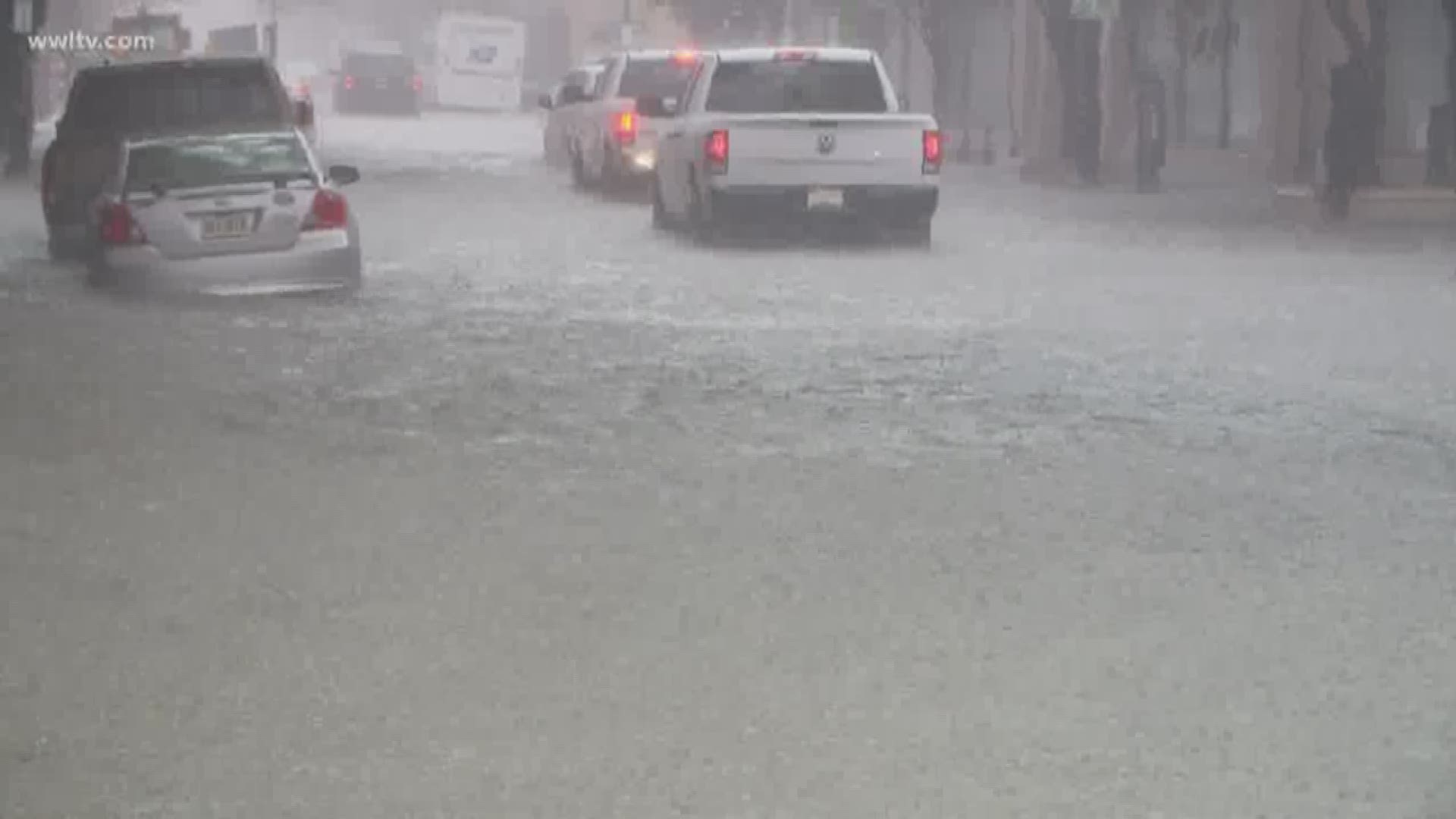NEW ORLEANS — City Councilwoman Helena Moreno on Wednesday recalled living in the Central Business District in the past. What she didn’t remember, though, was the streets of that neighborhood ever flooding.
“What is happening? What has changed?” Moreno asked leaders of the Sewerage & Water Board and Department of Public Works. “What are we doing to figure out what has changed? Because something is off.”
The S&WB and DPW were called before the City Council’s Public Works Committee to discuss recent floods on July 10 and Aug. 26 that left many parts of the city underwater that rarely or never flood.
Among the areas that flooded: the CBD and parts of Uptown.
While many people wanted an answer to the question about why those areas took on water, S&WB officials said they are working with the DPW to try to figure that out. But, they said, it won’t be a quick answer.
“We’re looking at this very systematically as if we’re one owner,” S&WB Executive Director Ghassan Korban said of the drainage system that is split between his agency and the DPW.
There are several theories about if new development in the CBD or if the VA hospital and University Medical Center in Mid-City might have contributed to the recent floods.
“I think it’s a thing,” Ramsey Green, deputy chief administrative officer for infrastructure said of ongoing construction projects as new buildings rise in the CBD. “I don’t know how much of a thing it is.”
What the S&WB did say is that so far, inspections of underground canals in the CBD have found no major blockages.
“There are no surprises,” Korban said.
There is now a plan to create a five-year cycle to inspect every inch of drainage canals in the city, but funding for that process is still being sought, Korban said.
With a greater comfort level when it comes to the S&WB, councilmembers turned their attention to the DPW, which has control of 8 million feet of drain lines in the city.
There was a tense moment when Keith LaGrange, head of the DPW, could not immediately say how many feet of drain lines have been inspected this year.
“I can get you that number,” LaGrange told Councilman Jason Williams.
“We asked for that percentage the last time we had a meeting,” a frustrated Williams responded.
“I can -- if you give me five seconds I’ll get that to you,” LaGrange said.
“Take 10 (seconds),” Williams shot back.
So far, LaGrange said, the DPW has inspected 300,000 feet of the 8 million feet of drain lines for which it is responsible, a number that left councilmembers dissatisfied.
The DPW handles any drain line with a diameter smaller than 36 inches. Anything larger than that is handled by the S&WB.
It’s a system that left David Rubenstein frustrated for years.
"We had a problem on Canal Street and St. Charles. Five years we called to the young lady at the Department of Public Works,” the Canal Street clothing store owner told the council. “She says, ‘Under the streetcar tracks, is it the 24- or the 36-inch pipe?’ I said, ‘I don't know, honey. It's under the streetcar track.’ She says, ‘Well we're not coming out because we don't know either.’”
Councilman Joe Giarrusso, who oversees the Public Works Committee, said a major question needs to be asked: “Should drainage reside inside City Hall or should drainage reside inside S&WB?”
He said at this point, it seems like everyone favors moving drainage to the S&WB, but that’s a process that could take some time, if discussions get that far.

